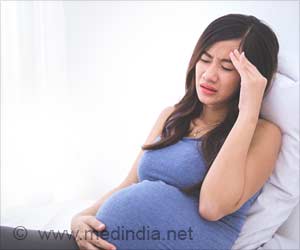Look for other options before going in for hysterectomy, experts say. Two-thirds of hysterectomies performed every year in US might be unnecessary.
Look for other options before going in for hysterectomy, experts say.
Two-thirds of hysterectomies performed every year in US might be unnecessary.The surgery is so popular, that one-third of all women will have a hysterectomy before they turn 60.
Several other approaches are available that may have fewer complications and shorter recovery times. And some research suggests that hysterectomy may lead to sexual problems, incontinence, and a slight loss of physical strength. Other studies dispute those findings.
If you ever face this surgery, “ideally, you’ll have time to consider all your options,” says Lauren Streicher, MD, a clinical assistant professor of obstetrics and gynecology at Northwestern University.
Health.com website suggests some of them.
Endometrial ablation:
Advertisement
Sex—and life as she knew it—had stopped. Feeling her uterus had outlived its usefulness, Cherry told her doctor, “Just take it out!”
Cherry was impressed with the statistics that 50 percent of women never bleed again after having the procedure and 40 percent have lighter periods.
One day after the procedure, Cherry felt great. That was seven years ago, and she hasn’t bled since. “It really changed my life,” she says. She’s back to being a morning person with energy to spare, and she and her husband enjoy dancing.
Robotic laparoscopic myomectomy:
For about a year, Purifoy thought her abdominal cramps came from a bladder infection.
“Even the pressure from my underwear hurt,” she says. After a pelvic ultrasound revealed a large fibroid (a benign uterine tumor), Purifoy considered having a hysterectomy, but her doctor told her about a new, uncommon procedure called robotic laparoscopic myomectomy—the fibroids are cut out through tiny abdominal incisions using robotic arms and instruments—she jumped at the idea. It’s a more precise type of surgery than traditional myomectomy (in which a surgeon makes a bigger incision and cuts out the fibroids herself) and may improve healing, says David Eisenstein, MD, senior staff physician in OB-GYN at Henry Ford Hospital in Detroit.
Purifoy’s recovery was a breeze. There’s a risk her fibroids will return, but for now she is symptom-free. “I used to sit up and cry from the pain, but no more,” she says.
Laparoscopic hysterectomy:
From the age of 15, McClain suffered from excessive bleeding, cramping, bloating—and anemia from the bleeding. Endometriosis (in which uterine tissue grows outside the uterus), fibroids, and the birth control pills she took for her symptoms made pregnancy impossible. And her condition was hardly conducive to relationships. “I had to put two towels on my bed at night with a garbage bag underneath,” she says.
Hysterectomy would have helped, but McClain hoped to have children. So she had nine surgeries for endometriosis and a myomectomy to remove a large fibroid. When her doctor found yet another fibroid, McClain finally chose laparoscopic hysterectomy—the removal of her uterus using tiny incisions and a minicamera. Recovery time is only about two weeks, instead of the six needed after traditional hysterectomy (which requires larger incisions).
McClain is now pain-free and regrets not having the procedure sooner. “I endured years of pain, holding on to the chance to have children,” she says. Her advice: Explore every option until you find one that will deliver the relief you want.
Total hysterectomy:
In 1955, Zimmerman’s mother took a drug called DES to help her carry a baby to term after four miscarriages. In the early 1970s, doctors discovered a link between DES and cancers of the cervix and vagina. And in the 1980s, studies showed that daughters of women who took DES often had malformed reproductive organs and higher risks of cancer.
Like many DES daughters, Zimmerman suffered for years with severe cramping and leg pain, and she was unable to bear children. (She ended up adopting.) Finally, when she was 45, doctors strongly advised her to have a total hysterectomy with oophorectomy—removal of her uterus, cervix, and ovaries. She immediately started menopause. “I gained 10 pounds, and I had no sex drive,” she says. Her sex drive never returned.
Most experts today say it’s unnecessary to remove the ovaries unless cancer risks are high. But there’s a good reason to keep them, even if you no longer want children: New research shows ovaries continue to produce testosterone long after menopause, which may affect libido.
Zimmerman suggests that women consider more conservative treatments. “If you’ve just got a uterus problem,” she says, “do not allow them to take your ovaries.”
Source-Medindia
GPL/M






